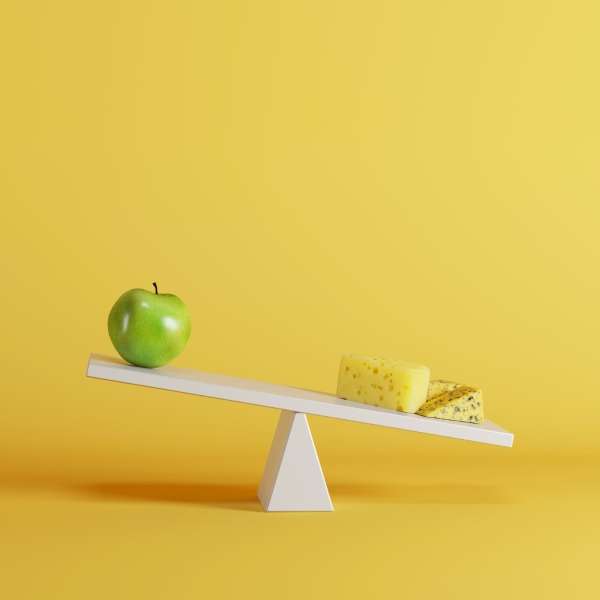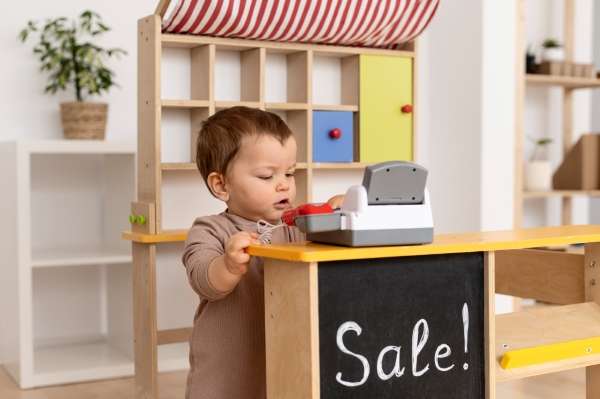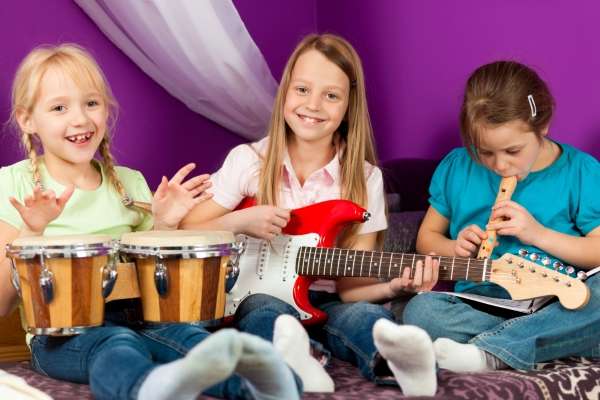Understanding Algebra
Introducing basic algebra concepts to young ones isn’t as complex as it seems. Algebra is like a puzzle. Instead of only using numbers, we use symbols and letters to represent unknown parts of that puzzle. It’s about filling in the gaps. Think of these symbols like the missing pieces in their favorite jigsaw puzzle.
Algebra is all about patterns and connections. Kids often love to predict what comes next in a song or a story. It’s the same with algebra, just using numbers and symbols. For example, if we line up toys in a certain order, they can guess which toy might be next.
Simply put, algebra is like a detective game. We’re given some information, and we have to figure out the missing parts. When we find those unknown numbers or symbols, it’s like solving a little mystery. It’s a fun and exciting way for kids to explore the world of math, and it starts with understanding these basic concepts.
This article is your guide on how best you can help your child. We explore effective and fun ways to keep your child active and engaged and most importantly learn more about this great concept.
10 Effective Fun Ways to Introduce Algebra to Preschoolers
Pattern Play

Ever watched a child sort their toys or line them up? That’s them recognizing patterns, and it’s a natural instinct for them. They see patterns in the world around them, in the songs they sing, and even in the routines you set at home. Patterns are like the rhythms of life for them.
Now, taking this a step further is where we bring in some basic algebra concepts. When you use objects, say colored blocks or fruits, to create sequences, you’re introducing algebra without them even knowing it. A simple sequence like apple-banana-apple-banana does more than just teach them about fruits. When they predict that after an apple comes a banana, they’re applying algebraic thinking.
In essence, you’re setting up a fun game for them. You show a pattern, let them predict what comes next, and then celebrate when they get it right. This boosts their confidence and love for learning. And who knows? Today’s apple-banana sequence might just be tomorrow’s algebra whiz in the making!
Use Balance Scales to Teach Basic Algebra Concepts
We’ve all seen a balance scale. It’s that simple tool with two pans hanging from either side. For kids, it’s like a teeter-totter on a playground, where both ends need a friend of equal weight to balance and have fun.
When introducing kids to balance scales, you’re doing more than just a simple physics lesson. You’re subtly ushering them into the world of algebra. Here’s how: When they see one side going up or down based on what’s placed on it, they’re witnessing a live representation of equations. Just like in those basic algebra concepts we talk about, where one side has to equal the other.
For example, if you place a toy car on one side and then balance it out with some building blocks on the other, you’re teaching them about equivalence without any complex jargon. They’ll understand that the weight of that toy car is the same as those blocks. And each time they achieve balance, they get a small victory, building a foundation for more complex algebraic understanding in the future. It’s simple, it’s fun, and it’s incredibly effective!

Treasure Hunts can be a great way to teach basic algebra concepts
Kids love adventures. The excitement of uncovering something hidden is universal for little explorers. Now, imagine combining this thrill with learning. Sounds fun, right?
Treasure hunts are more than just exciting escapades. Each clue they find, each little hurdle they cross, brings them closer to the treasure. Similarly, in the world of algebra, every piece of information we have leads us closer to finding the answer, the “unknown treasure.”
By embracing basic algebra concepts, we see that algebra isn’t just about numbers and symbols; it’s about finding solutions. Think of a simple treasure map: “Take ten steps from the big oak tree, then turn left near the blue rock.” Here, the oak tree and blue rock are clues leading to the treasure. Similarly, in algebra, certain values guide us to the unknown.
In essence, when kids are on a treasure hunt, they’re also on a journey through algebra. Every clue solved, every discovery made, reinforces their analytical thinking and problem-solving skills. And at the end? They not only find the treasure but also a newfound appreciation for the world of numbers!

Guess the Number
Remember playing hide and seek? The rush, the suspense, and the sheer joy of discovering someone hidden? Now, let’s channel that energy into math. Shocked? Don’t be! It’s simpler and more fun than it sounds.
Imagine you have ten marbles. You show your child all of them, then hide a few in your hand and show the rest. The immediate question in their little minds is, “How many did you hide?” This is where the magic starts.
By showing them, let’s say, 7 marbles and hiding 3, you’re essentially setting up a basic algebraic equation. They see the 7, they remember the 10, and then they start figuring out the hidden number. That little ‘unknown’ they’re trying to guess? That’s the very essence of algebra.
Introducing basic algebra concepts like this makes it less intimidating. It becomes a game. It becomes a challenge. And every time they guess correctly, they’re not just winning the game, they’re grasping the foundational idea that leads to algebra. So, next time you play “Guess the Number”, remember, you’re building little mathematicians, one guess at a time!
Story Problems are a great way to Teach a Preschooler Basic Algebra Concepts
Everyone loves a good story. The heroes, the adventures, the unexpected twists. Now, take a moment and picture this: What if these tales could be a doorway to the world of math?
Start with a simple story, like “Tommy had 5 apples. He gave 2 to his friend, Jane. How many apples does Tommy have now?” Here, you’re not just narrating a story; you’re also setting up a problem, a puzzle. As kids listen, they’re not only engaged with Tommy and Jane but are also, unknowingly, doing math.
These basic algebra concepts get woven into stories in such an easy and fun manner. It’s almost sneaky. They follow the story, step by step, and by the end, they’ve solved an algebraic problem. The characters, the actions, they all act as clues guiding them towards the answer.
So, next time you weave a tale, toss in some numbers, and actions. Watch as your child not only enjoys the narrative but also flexes their math muscles. Because, in the heart of every good story, there’s a problem to be solved. And isn’t that what algebra’s all about?
Matching Games
We’ve all played a matching game at some point, haven’t we? Those pairs of cards turned face down, waiting for us to find their twin. It’s a game of memory, sure, but there’s more math in it than meets the eye.
Let’s break it down. When kids play a matching game, they’re on the hunt for pairs. They’re looking for two cards that are the same or, in some cases, two items that belong together. This might seem simple, but it’s a powerful way to introduce the idea of equivalence.
In the world of basic algebra concepts, understanding that one thing can be equal to another is fundamental. Just as two matching cards create a pair, in algebra, we want both sides of an equation to match or be equivalent.
So, every time they spot a match and beam with pride, they’re grasping the foundational idea of pairs and equivalency. And as they grow, this understanding deepens, aiding them when they encounter more complex algebraic problems.
Next time they dive into a game of matching pairs, remember, it’s not just a game. It’s a stepping stone towards a deeper understanding of algebra, one match at a time!
Interactive Apps
Living in the digital age has its perks, especially for our little ones. Remember when learning was limited to classrooms and textbooks? Today, it’s as easy as tapping on a screen.
Consider educational apps designed for kids. These aren’t just games; they’re learning tools. Bright colors, fun characters, and interactive challenges make learning feel less like a chore and more like a thrilling adventure. From dragging and dropping items to solve puzzles, to connecting dots to create shapes, these apps offer a plethora of ways to grasp math concepts.
When it comes to basic algebra concepts, some apps shine brighter than others. They introduce kids to mathematical relationships and patterns, making algebraic thinking a part of their playtime. For instance, an app might present a puzzle where a child needs to distribute stars equally between animated characters. Through playful interaction, they’re understanding balance and equality, core components of algebra.
So, the next time your child grabs a tablet for some game time, consider steering them towards these educational treasures. They’re not just playing; they’re building a foundation for future math success.
Role Playing: Teaching Basic Algebra Concepts

Remember playing shopkeeper and customer as kids? It wasn’t just pretend play; it was a learning experience wrapped in fun! Today, we can elevate that play to introduce our preschoolers to the world of numbers and equations.
Let’s imagine a pretend toy store. Shelves lined with toys, each with a little price tag. Now, introduce play money. As your child picks a toy, you can ask, “How much money do you need to buy this?” or “If you give me 10 coins, how many will you get back after buying this toy worth 5 coins?”
What’s happening here is magical. With every transaction, they’re doing math. They’re subtracting, adding, and calculating – all without even realizing it. It’s algebra in action!
By incorporating basic algebra concepts into role-playing games, you make learning spontaneous and relevant. When they hand over play money and wait for their change, they’re engaging with algebraic problems. It’s real-life math, all wrapped up in the joy of play.
So, the next time you set up a pretend store, know that it’s more than just fun. It’s a classroom in disguise, teaching valuable lessons with every toy “purchased.”
Nature Patterns
Ever gone on a walk and noticed the spiral in a snail’s shell? Or the symmetry in a butterfly’s wings? Mother Nature is quite the artist, and she loves working with patterns. And these natural artworks? They’re a gateway for our preschoolers to the fascinating world of algebra.
Let’s start simple. On your next outdoor adventure, maybe gather some leaves. Different shapes, different sizes, yet there’s a pattern to them all. Line them up from smallest to largest or group them by color. These activities might seem straightforward, but they’re actually helping kids recognize sequences and make predictions.
When you incorporate basic algebra concepts like these into nature exploration, you’re teaching in the most organic way possible. They’re not just observing; they’re interpreting. When they predict the next item in a sequence or identify a repeating pattern, they’re laying the foundation for algebraic thinking.
So, the next time you’re out in the park or backyard, pause and look around. There’s a world of math out there, waiting to be explored. And as your child discovers, they’re not just connecting with nature; they’re building bridges to the world of algebra.

Learn Basic Algebra Concepts with Music and Rhythms
You’ve seen it – that foot-tapping, hand-clapping, body-moving reaction when a catchy tune comes on. Kids naturally connect with music. And guess what? Beyond just the fun melodies and dance moves, music is brimming with mathematical magic.
Start with a simple clap-clap-pause rhythm. Ask your child to repeat. What you’re doing is creating a pattern, and when your child responds, they’re recognizing and reproducing that pattern. Let’s level it up: add in foot stomps or finger snaps. Before you know it, you’re having a rhythmic conversation!
Incorporating basic algebra concepts into musical play might sound unconventional, but it’s genius. Patterns in rhythms help hone sequential thinking. Every beat, pause, and repeat is a step in algebraic understanding.
So, next time you play some music, dive deeper. Explore the beats, create rhythms, and dance to the sequences. Your child isn’t just feeling the music; they’re internalizing foundational math concepts, one beat at a time. And in this rhythmic journey, algebra finds its natural, joyful expression.

FAQ: Isn’t algebra too advanced for preschoolers?
Absolutely not! At first glance, algebra might seem like a complex subject better suited for older kids, but in reality, it’s all about recognizing patterns, sequences, and relationships. When framed in this way, algebra becomes entirely accessible for little minds.
Imagine breaking down algebra into playful activities, games, and everyday observations. We’re not diving into complex equations here. Instead, we’re exploring the world and finding its rhythms, patterns, and sequences. Every game of “what comes next” or any pattern they spot in nature is a step in their algebraic journey.
It’s essential to remember that introducing basic algebra concepts to preschoolers is less about the formalities of algebra and more about nurturing their inherent problem-solving skills and analytical abilities. So, while they might not be solving x + y equations, they’re building the foundational skills that will make tackling those equations a breeze in the future.
Conclusion
Teaching algebra to preschoolers is about making it fun and relatable. At this age, kids are naturally curious. They’re explorers, adventurers, and little detectives. By turning algebra into playful games and everyday adventures, we tap into their world. And guess what? Introducing basic algebra concepts becomes a seamless, enjoyable process. It’s not about complex equations or hard math problems. It’s about laying a foundation with fun, everyday activities that tap into their innate curiosity. Kids are naturally designed to explore, ask questions, and make connections.
They see the world as one big adventure, waiting to be discovered. By turning basic algebra concepts into playful games, stories, or simple patterns, we speak their language. We weave math into their playtimes, stories, and even their nature walks. This method isn’t just about teaching a subject; it’s about fostering a love for learning. As we take this journey, remember to keep it light, make it fun, and always celebrate their little victories.






VABxvsyH
1
Your comment is awaiting moderation.